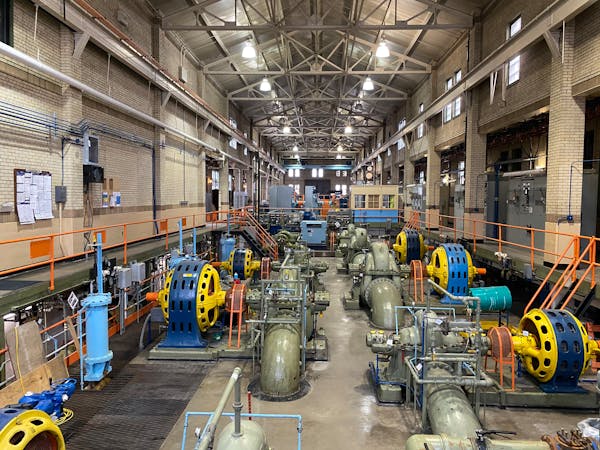Listen and subscribe to our podcast: Via Apple Podcasts | Spotify | Stitcher
Motorists driving through downtown St. Paul on Interstate-35E know the drill. Slow your roll to 45 miles per hour while driving the nearly four-mile stretch between Interstate 94 and West Seventh Street.
One reader asked Curious Minnesota, "Why does Interstate 35E through St. Paul have a 45 mph speed limit? It can obviously support a much higher limit."
The lower speed limit on the "35E Parkway" is part of a carefully crafted compromise after a decades-long battle between highway planners and affected St. Paul neighborhoods.
This battle over the construction of 35E was so contentious it landed in both the courts and the State Capitol. Work on 35E through downtown St. Paul began in the 1960s but the official ribbon-cutting on the final stretch of freeway didn't happen until 1990.
"This is not the first time or only time we've had opposition to a highway project in Minnesota," said Kent Barnard, a spokesperson with Minnesota Department of Transportation.
As early as the 1950s, plans called for Interstate 35 to split with branches extending through both downtown Minneapolis and St. Paul. The construction of 35W south of downtown Minneapolis occurred with "relatively little controversy" according to a "Politics and Freeways" report published by the University of Minnesota's Center for Transportation Studies.
Construction of 35E through St. Paul was a much rockier road. Land acquisition for 35E started in the 1960s. By the early 1970s, freeway bridges had been built and grading was underway. But opposition was mounting. People living in affected neighborhoods formed Residents in Protest 35E, better known as RIP 35, and raised concerns about noise, pollution and increased traffic.
In August 1972, the city of St. Paul, joined by citizens and neighborhood associations, sued the state highway department and the U.S. Department of Transportation, demanding an environmental-impact statement be prepared in compliance with new federal law.
Construction was halted and "vitriol flowed freely on both sides," according the report.
The state legislature waded into the battle in the mid 1970s, passing a moratorium on construction of 35E. Several prominent lawmakers lived in the nearby St. Paul neighborhoods, said Adeel Lari, retired MnDOT director of research now with the U's Humphrey School of Public Affairs.
Others, including Dakota County lawmakers, pressed for the roadway to be completed.
More litigation ensued. In 1984, a federal judge ruled that an environmental study of 35E was adequate and construction could proceed.
All parties agreed to set the speed limit at 45 miles an hour and to ban most heavy truck traffic. That stretch of highway also included more elaborate landscaping.
Lari said he believes the powerful residents who opposed the freeway, including state lawmakers, were ultimately why the parties settled on the lower speed limit.
"It was pandering to the powerful at the time, plain and simple," Lari said
Barnard said robust public debate around 35E made for a better design and a better outcome.
"By allowing many different voices to be heard and opinions to be expressed, we come to a solution that is best for all parties," he said.
If you'd like to submit a Curious Minnesota question, fill out the form below:
Read more Curious Minnesota stories:
Did Ford make millions of windows from sand mined beneath its plant?
How are courts in Minnesota coping with the pandemic?
Why doesn't Minnesota charge a sales tax on clothing?
Why was I-94 built through St. Paul's Rondo neighborhood?
Why does Minneapolis keep planting trees under power lines?
Why are vehicle tabs more expensive in Minnesota than in other states?



